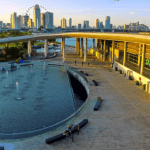A Brief History of Peranakan Cuisine
Peranakan cuisine is a unique blend of Chinese and Malay cooking traditions that has been shaped by the Peranakan community’s history and culture. The Peranakans, also known as the Babas and Nyonyas, are descendants of Chinese immigrants who settled in the Malay Archipelago in the 15th to 16th centuries. Over the years, the Peranakans developed a unique way of life and cuisine that reflected their mixed heritage.

The Origins of Peranakan Culture
The Peranakan culture is an amalgamation of Chinese and Malay influences that can be traced back to the 15th century. During this time, Chinese traders began to settle in the Malay Archipelago, and many of them married local Malay women. The children of these unions were known as Peranakans, and they grew up in a culture that was a blend of Chinese and Malay traditions.
The Peranakans developed their own unique language, fashion, and cuisine, which was heavily influenced by both Chinese and Malay cooking techniques and ingredients. They also developed their own unique way of life, which was characterized by a strong sense of community and a love of tradition.
The Fusion of Chinese and Malay Influences
Peranakan cuisine is a testament to the fusion of Chinese and Malay influences. It is characterized by the use of a wide variety of spices and herbs, including lemongrass, turmeric, galangal, and chili peppers. These spices are used to create flavorful and aromatic dishes that are both complex and satisfying.
Peranakan cuisine also makes use of a variety of Chinese ingredients, such as tofu, soy sauce, and rice wine. These ingredients are used to create dishes that are both hearty and flavorful.
The Role of Peranakan Food in Singaporean Society
Peranakan cuisine has become an integral part of Singaporean society. It is a popular choice for both locals and tourists, and there are many restaurants in Singapore that specialize in Peranakan cuisine.
The Peranakan Museum in Singapore is dedicated to preserving the history and culture of the Peranakan community. The museum features exhibits on Peranakan fashion, jewelry, and food, and visitors can even sample some of the traditional dishes at the museum’s cafe.
Peranakan cuisine is a testament to the rich cultural heritage of Singapore. It is a unique blend of Chinese and Malay influences that has evolved over centuries to become a beloved part of Singaporean culture.
Here are Best Peranakan Food In Singapore
Where to get Peranakan food in Singapore
Bonding Kitchen
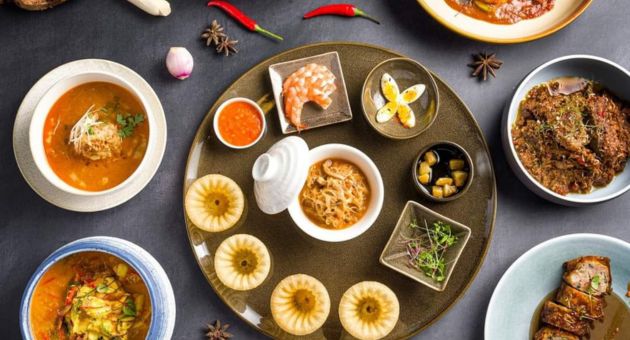
Bonding Kitchen is a Peranakan restaurant with a twist. It started as a private dining service in Johor Bahru, before expanding into a restaurant on Orchard Road. The space is divided into two sections, all decorated in calming blue and filled with fresh flowers. The kueh pie tee is a must-try, with fluffier shells than the typical ones.
Chilli Padi Nonya Restaurant
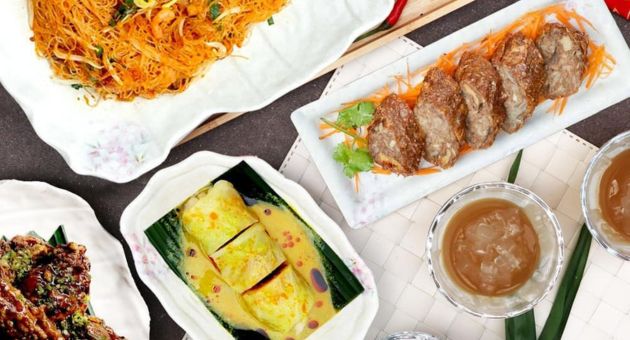
A stroll around Joo Chiat is made all the more enjoyable by making a pitstop here, as it’s a great place to share a host of authentic Peranakan dishes. The Nonya specialities include popiah, kueh pai ti, creamy and delicious curry chicken, and chap chye. Many of the dishes come in three sizes but prices are so good that over-ordering is easy and excusable.
The batik fabric covering the tables adds some colour to this simple restaurant.A stroll around Joo Chiat is made all the more enjoyable by making a pitstop at this humble eatery, which is tucked away in a quiet corner of the neighbourhood.
The restaurant is a great place to share a host of authentic Peranakan dishes, including popiah, kueh pai ti, creamy and delicious curry chicken, and chap chye. Many of the dishes come in three sizes, but prices are so good that over-ordering is easy and excusable. The batik fabric covering the tables adds some colour to this simple restaurant, which is a great place to enjoy a meal with friends or family.
The popiah is a must-try, as it is made with fresh, crisp ingredients and a delicious peanut sauce. The kueh pai ti is another popular choice, and is a type of steamed dumpling filled with a sweet and savoury filling. The curry chicken is also a standout dish, and is made with a rich and creamy curry sauce that is sure to please even the most discerning palate. The chap chye is a hearty vegetable dish that is perfect for a light meal.
The restaurant is a great place to experience the flavours of Peranakan cuisine in a casual and relaxed setting. The staff is friendly and attentive, and the prices are very reasonable. Overall, this is a great place to enjoy a delicious meal with friends or family.
Old Bibik’s Peranakan Kitchen
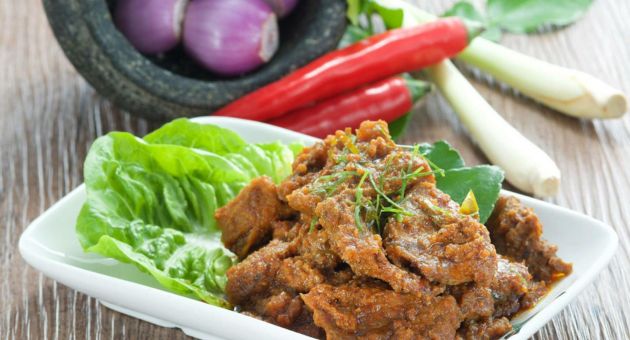
Craving for hearty Nyonya Food? Order from Old Bibik’s Peranakan Kitchen now and you can feast away at the comfort of wherever you are.Old Bibik’s Peranakan Kitchen is a family-owned and operated business that has been serving the community for over 20 years. They are known for their authentic Nyonya cuisine, which is a fusion of Malay, Chinese, and Indonesian cooking.
Some of their most popular dishes include laksa, char kway teow, and ayam buah keluak. Laksa is a spicy noodle soup made with coconut milk, fish curry, and rice noodles. Char kway teow is a stir-fried noodle dish with shrimp, chicken, and vegetables. Ayam buah keluak is a braised chicken dish with black nuts.
Old Bibik’s Peranakan Kitchen also offers a variety of vegetarian and vegan dishes. Their vegetarian laksa is made with vegetable broth and tofu instead of fish curry. Their vegan char kway teow is made with mock meat and vegetables.
If you are looking for a taste of authentic Nyonya cuisine, Old Bibik’s Peranakan Kitchen is the place to go. With their wide variety of dishes, there is something for everyone to enjoy. And with their convenient delivery service, you can enjoy their delicious food without even leaving your home.
Candlenut
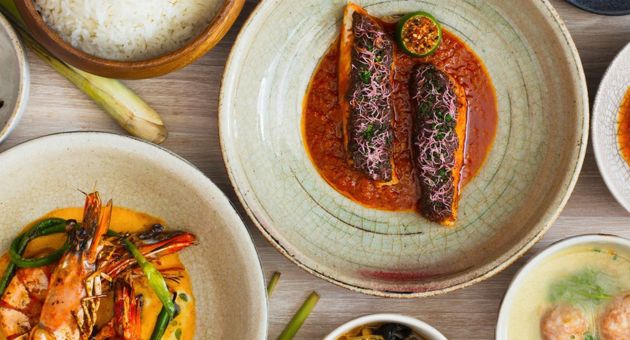
Helmed by chef-owner Malcolm Lee, the world’s first Michelin-starred Peranakan resto offers superb traditional dishes with a modern, elevated spin. But if you’re looking for the complete dining experience, go for the Taste of Candlenut menu to savour dishes like wagyu beef rendang, ikan gulai (snapper fillet curry) and gula melaka cake.Helmed by chef-owner Malcolm Lee, the world’s first Michelin-starred Peranakan restaurant, Candlenut offers superb traditional dishes with a modern, elevated spin.
But if you’re looking for the complete dining experience, go for the Taste of Candlenut menu to savour dishes like wagyu beef rendang, ikan gulai (snapper fillet curry) and gula melaka cake.
Candlenut’s menu is a celebration of Peranakan cuisine, a fusion of Chinese, Malay and Indonesian cooking that originated in the Peranakan community, a group of people of mixed Chinese and Malay descent who have lived in Southeast Asia for centuries. The dishes on the Taste of Candlenut menu are all classics of Peranakan cuisine, but they’re given a modern twist by Lee, who uses only the freshest, seasonal ingredients.
The wagyu beef rendang is a must-try, and is made with melt-in-your-mouth wagyu beef that’s slow-cooked in a rich and flavorful rendang sauce. The ikan gulai is another standout, and is made with a whole snapper fillet that’s cooked in a fragrant and spicy gulai curry. And for dessert, the gula melaka cake is a decadent treat that’s made with gula melaka, a type of palm sugar that gives the cake a rich and caramelized flavor.
The Taste of Candlenut menu is a great way to experience the best of Peranakan cuisine, and it’s the perfect way to cap off a night out in Singapore.
The Blue Ginger
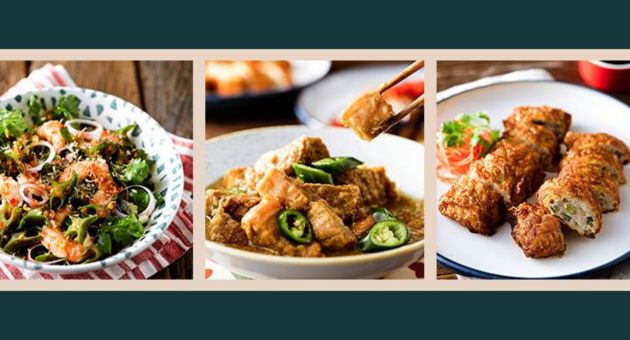
Family-run restaurant The Blue Ginger is one well-known spot that dishes out exquisite Peranakan cuisine. Established in 1995, the Michelin Bib Gourmand name is an oldie but goodie. If you’re a stickler for tradition, head to the original Tanjong Pagar locale for flavourful plates of beef rendang, pork ribs assam and kueh pie tee.
But, those keen to check out its elegant, contemporary eatery at Great World can fill up on the outlet-exclusive Nyonya noodles and buah keluak fried rice. All that said, don’t forget to leave space for the creamy durian chendol dessert! Family-run restaurant The Blue Ginger is one well-known spot that dishes out exquisite Peranakan cuisine.
Established in 1995, the Michelin Bib Gourmand name is an oldie but goodie. With two locations, one in the heart of Tanjong Pagar and the other in Great World City, The Blue Ginger offers a variety of Peranakan dishes that are sure to please any palate.
If you’re a stickler for tradition, head to the original Tanjong Pagar locale for flavourful plates of beef rendang, pork ribs assam and kueh pie tee. The beef rendang is made with tender beef that is cooked in a rich and flavorful coconut milk sauce, while the pork ribs assam is a sour and spicy dish that is perfect for those who enjoy a bit of heat.
The kueh pie tee is a crispy pastry shell filled with a savory mixture of vegetables and shrimp, and is a must-try for any first-time visitor to The Blue Ginger.
For those who are looking for something a bit more contemporary, the Great World City location offers a variety of Nyonya noodles and buah keluak fried rice. The Nyonya noodles are made with a thick and creamy gravy that is infused with the flavors of lemongrass, galangal, and turmeric. The buah keluak fried rice is a unique dish that is made with black buah keluak nuts, which give the rice a rich and earthy flavor.
No matter which location you choose, you’re sure to enjoy a delicious and memorable meal at The Blue Ginger. And don’t forget to leave room for the creamy durian chendol dessert! This traditional dessert is made with chendol noodles, coconut milk, and gula melaka, and is the perfect way to end a meal at The Blue Ginger.
Conclusion:
These are just a few of the many great places to get Peranakan food in Singapore. With its rich history and culture, Peranakan cuisine is a must-try for anyone visiting Singapore.




